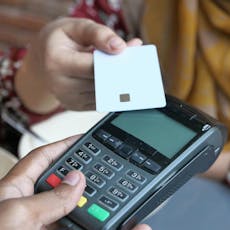Balance transfer cards can help you consolidate your debts or save money by moving your current credit card debt to a card with a lower interest rate.
See which credit cards you're eligible for
Comparing won’t affect your credit score



By Matt Fernell, Editor at Finance.co.uk.

A balance transfer can help you move expensive debt to a cheaper card. Learn if a balance transfer card is right for you and how to find the right deal for your needs.
We’ll check your eligibility to show you the credit cards and deals you’re most likely to get. You can then compare deals side by side to find the right card for you.
Get a decision and see deals in minutes
Compare balance transfer cards from a range of top providers
Only see credit cards you’re eligible for
Check eligibility with no impact on your credit score
We use your information to do a ‘soft check’ on your credit record to assess your eligibility - which means it has no impact on your credit record.
To help you find the right deal, we just need to know about your:
Income, including your employment status, start date and annual income
Household, including your homeowner status, your share of rent or mortgage payments and your address
Personal details, including your name, date of birth, number of dependents and contact details
We use this information to check your eligibility so we can show you the best balance transfer credit cards available to you.
Here's an in-depth look at how balance transfer credit cards work.
The deals you’ll see will depend on your credit score and financial situation. You will get access to a better deal if you have a good credit rating.
When comparing balance transfer cards, there are a few factors you should consider:
The interest-free period: Most balance transfer credit cards offer an introductory period in which you won’t be charged interest on your transfer. This means the longer the interest-free period, the longer you’ll have to pay off your debt without being charged interest.
The balance transfer fee: Most cards will charge you a fee to make a transfer. This can be a flat fee, but it is usually a percentage of the balance you transfer. This is typically between 1 and 4%, and there may be a minimum fee if you transfer a small amount.
The interest rate: After the introductory period is over, you will be charged interest on your balance if you haven’t paid it off. It’s important to check this, especially if you don’t think you’ll clear your debt in time.
Your current credit card provider: You can’t transfer your balance to a new card with the same provider, so bear this in mind when comparing and discount these deals from your search.
The right card for you will depend on your circumstances. For example, if you think you can pay off the balance quickly, a card with a lower transfer fee might be better than one with a long introductory period.
However, if you need a long time to repay your debt without facing interest, go for the card with the longest 0% period. Learn more about how balance transfer credit cards work here.
You need a good credit history to get approved for credit card balance transfers.
Most credit card providers require a good or excellent credit score. You can check your credit score for free on apps like Clear Score, Experian and Credit Karma.
If you apply for a balance transfer card and get turned down, your credit score could be negatively impacted. This is why we check your eligibility first: You only see the cards you’re likely to get and can apply with confidence.
If you need to improve your credit score, there are several things you can do, including:
Register on the electoral roll
Never miss a bill payment
Keep your credit utilisation low
Check for errors in your report
Avoid moving around a lot
Build your credit history by taking out credit-building products (such as a credit builder card)
Monitor your accounts for fraudulent activity
Avoid multiple credit applications in a short space of time
Stay within your credit limit
Use eligibility calculators before applying for any form of credit
To be eligible for a credit card, you will also need to be over the age of 18 or 21 with some providers. You may also need to show you have a steady income and can afford to repay what you spend or transfer onto your card.
It’s not impossible, but you’re unlikely to be accepted for the best balance transfer cards if you have a poor credit record.
The deals you will be eligible for are likely to be much more expensive than the leading offers. It may also be difficult to find a deal that offers a long 0% introductory rate.
Most balance transfer cards for bad credit charge higher interest rates once the 0% offer runs out. If you can’t be sure you’ll be able to repay your balance before the higher interest rate kicks in, it might be best to keep your debt on your existing credit card - especially if it has a lower APR.
The main advantages of using a balance transfer credit card include:
Moving expensive debt onto a 0% card will save you money in interest
They can help you pay off debt faster as you won’t be paying interest for a period
You can consolidate several credit card balances onto one card, making them cheaper and easier to manage
Some cards offer rewards or cashback when you make a balance transfer
There are a few downsides that you need to be aware of before you apply, including:
You will need a good or excellent credit score to access the best balance transfer deals
You will need to pay a fee every time you make a balance transfer, so make sure what you will save in interest is more than the cost of the fee
The interest rates after the 0% period can be high, so make sure you can clear the balance before then
Any purchases you make with the card may not qualify for the 0% rate and could incur interest charges
A balance transfer credit card can be a great way to reduce the cost of your debts and help you pay off expensive card balances. However, there are some alternatives you could consider:
Money transfer cards: This type of credit card allows you to transfer money to your current account rather than another credit card. They can help you clear debts like an expensive overdraft, but they also come with transfer fees.
Debt consolidation loans: This type of loan is designed to pay off any expensive borrowing you have, leaving you with one manageable payment.
Overdraft: You could use your overdraft to pay off expensive credit cards, but make sure the interest is less than what you are currently paying. Overdrafts can be expensive, so this should be a last resort.
The information provided does not constitute financial advice, it’s always important to do your own research to ensure a financial product is right for your circumstances. If you’re unsure you should contact an independent financial advisor.
We're on a mission to improve the finances of the nation by helping you to spend wisely and save money



We're on a mission to improve the finances of the nation by helping you to spend wisely and save money



When you transfer your existing debt from one card to a new card, your old card will remain open. If you wish to close your old card, you’ll need to let the provider know.
Some lenders allow this, but it’s worth checking before you apply.
Be wary of doing this because the debt will become yours as soon as you do it, so it becomes your responsibility. Never feel pressured to do this for your partner - especially if your relationship is new.
If you cannot shift all your old debt over to your new card, you could check your chances of acceptance with another provider. However, applying for too many credit products in a short period of time could harm your credit score.
It can take a few days to process a balance transfer. If you’re applying for a new card, you may need to wait for this to be issued first, which can take a few days.
Some providers can process your transfer as part of your card application, which means it could go through within a few days.
You can only transfer a balance to another credit card with a balance transfer. It’s also important to note that you can usually only transfer to a different card provider.
If you want to transfer money from a credit card into your current account, you can do this with a money transfer credit card.
It is usually only possible to use up to 90% of your credit limit on your new card for balance transfers. For example, if the credit limit on your new balance transfer credit card is £5,000, you can only transfer up to £4,500 to it.